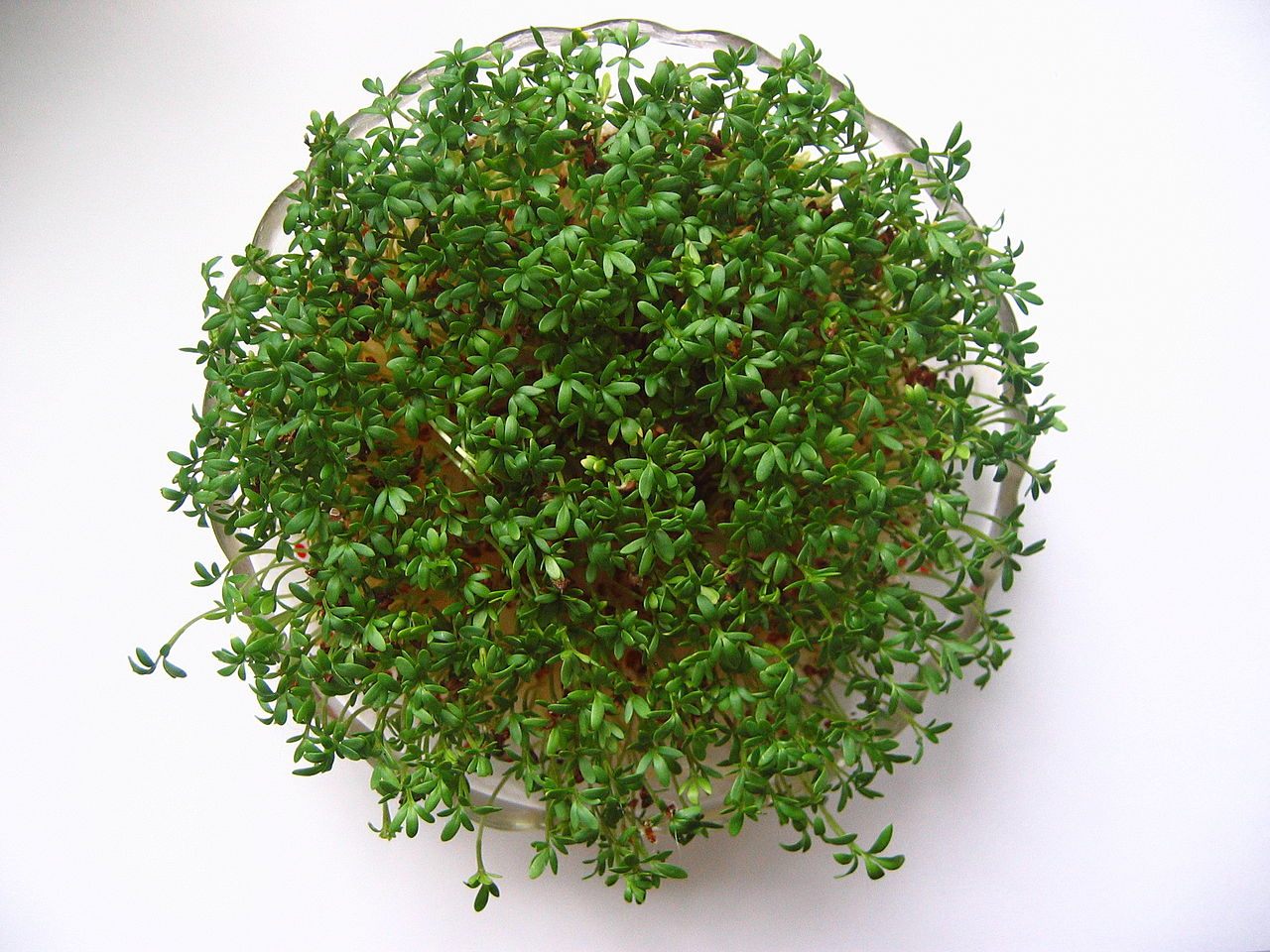Featuring image: Cress can grow nearly everywhere, but can it also survive on the Moon? Bastet78, Wikimedia Commons, Creative Commons (CC BY-SA 4.0).
Authors: A.-L. Paul, S. M. Elardo and R. Ferl
Plants surround us everywhere and dominate our planet. We feed from them, we build our homes from them and we need them as a source for oxygen. We couldn’t imagine a world without them. But can we take them with us, when we visit other worlds?
In space science, plants have already played an important role. They are often used as model organisms for experiments and in future space missions they might even be used as important additions to the astronauts’ food and life supply. Thus, they already made their way up to the International Space Station. Now for the first time, Paul and colleagues have tried to grow plants in original lunar soil, finding that we may be able to take our green companions with us to the Moon.
Now seriously, why should we want to grow plants on the Moon? After only three years of manned missions (1969 – 1972), humans disappeared from the face of the Moon. But soon NASA’s Artemis missions will bring us back to it after half a century of absence. These upcoming missions will not only provide the infrastructure for a lunar space station, but also a long term ground base. For such a long term habitat, plants can add crucial advantages: first, they are a reliable food and oxygen source and also useful for water recycling and as a CO2 sink.
Ok, taking plants with us to the Moon could be useful, but how do we test that? Paul and co-workers built tiny flowerpots with a diameter of only 12.5~mm to just use a minimum amount of lunar soil. Seeds from thale cress were planted in samples from three different lunar regions, which came back from the Apollo missions 11, 12 and 17. Furthermore, some seeds were planted in an artificially prepared terrestrial soil, called JSC-1A. JSC-1A was designed to be similar to lunar soil in texture and mineralogy. However, it is still way closer to Earth’s soils than to soils from the Moon.

The team’s first big surprise was that nearly all seeds germinated. The plants seeded in the terrestrial soil JSC-1A showed nearly no variation in size and colour, while plants grown in lunar soils showed a huge variability, in and between the three different soils: Roots were sometimes shorter and a lot of plants showed black or reddish pigmentation. The differences got more and more prominent as the experiment went on. And none of the plants in lunar soils got as big as the plants in the terrestrial soil. The plants grown in soil from the Apollo 11 mission struggled a lot to grow, while plants in soil from the Apollo 17 mission were closer to the size and colour of plants from Earth soils.
To find out what was causing the poor growth in lunar soils, the scientist looked into the plants’ gene expression to identify which genes were activated during growth. As it turned out, a lot of the changes in gene expression for the lunar soil-grown plants were likely caused by high salt and metal contents as well as the lack of potassium.
When comparing the three lunar soils, the grain size and iron particle content varies a lot. The soil from the Apollo 17 landing site is fresher than the others, which means its exposure to cosmic irradiation was much shorter. On the other hand, the soil from the Apollo 11 site was the oldest. This exposure led to the destruction of mineral grains and the grain size shrinks, while the content of mobile iron nanoparticles increases. In other words, the lunar surface erosion makes soil less fertile for terrestrial plants. This will be important as humans start to think about where to put their first large station on the Moon. Paul and colleagues showed that it is possible to grow plants in lunar soil, thus the dream of farming on other planets may come true one day. If yes, we will definitely need some space cowboys!
License:
‘Dreaming of a green Moon – farming lunar fields’ by Max Winkler is licensed under a Creative Commons Attribution-ShareAlik

